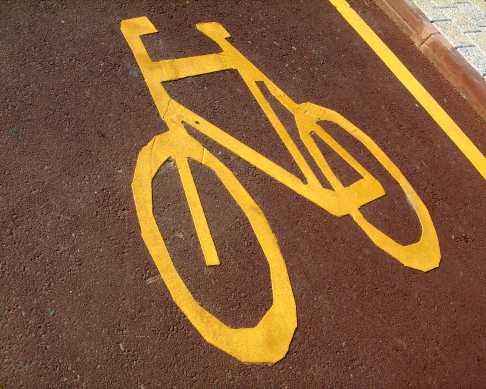
For years now, cycling experts have been telling us that the number of cyclists on the roads is directly proportional to the rate of cycling injuries. They quote all sorts of studies about the number of cyclists riding at any given time and how many accidents occurred at each time. All of the statistics point to an increase in injuries at times when there are fewer cyclists on the roads.
Bicycle advocates have used these numbers to encourage cycling. Their contention is that the more cyclists there are on the roads, the safer cycling is for everyone.
This may well be true. When drivers become accustomed to sharing the road with cyclists, they are less surprised to see cyclists on the road and are more careful to look for bikes around them when they change lanes or turn.
Experienced cyclists can probably agree on the safety in numbers theory. In all aspects of society, we talk about raising awareness, the idea being that when people are educated about unfamiliar things, they change their behavior. Cycling should be no different. However, the inverse of this theory is more difficult to believe, namely that fewer cyclists on the roads leads to more injuries.
This assumes that any encounter between a car and a bicycle is due to the driver’s lack of awareness of bicycles, and therefore results in injury to the cyclist. Statistics may show a larger number of injuries when ridership is low, but this could certainly be related to factors other than the number of cyclists on the roads.
My personal experience tells a different story than the statistics. As a kid, I rode the streets of two different cities, in two different states. Cycling was not a popular activity. For the most part, kids rode bikes and adults drove cars.
Even though I was a kid, I used my bike as transportation and rode quite a few miles. So did my friends. Still, none of us were ever injured. In fact, the roads were safer then, both for cyclists and pedestrians.
I can remember cars stopping and waving me across a street at a time when cyclists were few and far between. I can also remember cars stopping to let me pass before turning right into a side street. Overall, I felt safer.
Now, maybe some of this can be attributed to my youth. Kids always feel invincible. The idea of having an accident doesn’t cross their minds, so they ride with reckless abandon. That’s what I did. But unlike today, where I ride with caution, eyes glancing around to all sides and over my shoulder, nothing happened to me.
Could this be attributed to luck? Possibly. But it could also be attributed to cultural differences. When I was a kid, people were courteous, especially the older people. They all had manners and conformed to the rules of etiquette. None of them wanted to be perceived as gauche.
Today, nearly everyone is rude and self-centered, regardless of age. A habitual public aggressiveness has become ingrained in our culture. As a result, few people consider the welfare of others when sharing public spaces.
Such cultural changes could have as much to do with cycling injury rates as the number of cyclists on the roads. In general, factors other than the number of cyclists on the roads and injury rates haven’t been considered.
Statistics can be a good thing. They can work in our favor. They can be used to encourage cycling and keep us safe by making cycling a valid form of transportation. Still, we must be careful not to place too much emphasis on numbers and not to place too much stock in things which may be coincidental.
By emphasizing the number of cyclists on the roads, with respect to injury rates, we may be overlooking more serious problems, which if addressed, might actually make cyclists safer. Perhaps bicycle advocates should reconsider using the same statistics time and again, and look for other causes of injury — such as driver aggressiveness or lack of common courtesy.
As the saying goes, familiarity breeds contempt. Bringing up the same points to convince individual drivers, cities and towns to accommodate bicycles may not be the best strategy in the long run. We need new ideas about what keeps cyclists and all road users safe, and new suggestions for how to achieve those things.
Statistics can only go so far. At some point, we need to stop talking numbers and turn to creativity to effect change. We can do this by looking at the big picture, and imaging what livable streets should look like, because well conceived action, not fear tactics based on statistics, is what will effect positive change.



